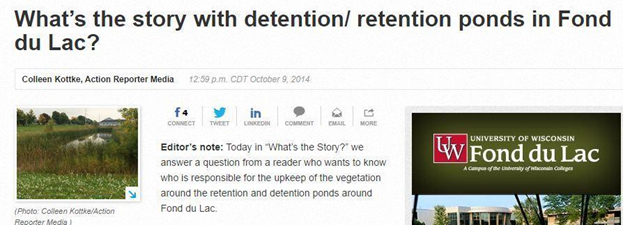Most people see man made ponds as merely bodies of water that provide aesthetic value to a certain locale. That may hold water for some (no pun intended) but others provide more than just aesthetic functions. These ponds act as protection to communities from flooding as well as shielding waterways and water systems from becoming contaminated.
Communities that are located in areas where frequent rains occur may experience issues with the management of storm water runoff and flooding. To address this, man made ponds are built to help in collecting rainwater through connections to the community’s drainage system. These ponds are termed either detention ponds or retention ponds.
Either one provides communities with storage space to trap rainwater and gradually release it to the environment. Usually, these ponds are surrounded by local vegetation that act as natural flood buffers. Apart from containing storm water, these ponds also serve as holding areas for various sediments that might eventually contaminate community water supplies and water systems.
Known to be among the most reliable stormwater bmp, ponds such as these are generally located on the boundaries of communities. However, communities have a choice between a detention system and a retention system. A detention system releases all trapped water back into the environment, rendering it dry between storms. Meanwhile, a retention system, such as that offered by StormChamber, maintains a certain level of stored water.
What makes a retention basin an ideal storm water bmp is that it allows the trapped water to be filtered before it is slowly released to the environment. This ensures that the water is free from sediment and other pollutants which can be hazardous to the health of community residents, if they find their way to water supplies and water systems.
As for the vegetation in these ponds, FDL Reporter’s Colleen Kotke interviews the Public Works Director for the city of Fond du Lac, Wisconsin about the subject and writes:
Skiff said the level of maintenance applied to vegetation around private ponds is up to the owner.
“Whether they want to maintain them like a golf course or leave them with more of a rustic look, it’s really their preference,” Skiff said. “However, if the appearance around the pond is really getting out of hand and allowing vermin to move in, the city might take action.
(Source: What’s the story with detention/ retention ponds in Fond du Lac?, FDL Reporter, October 9, 2014)






